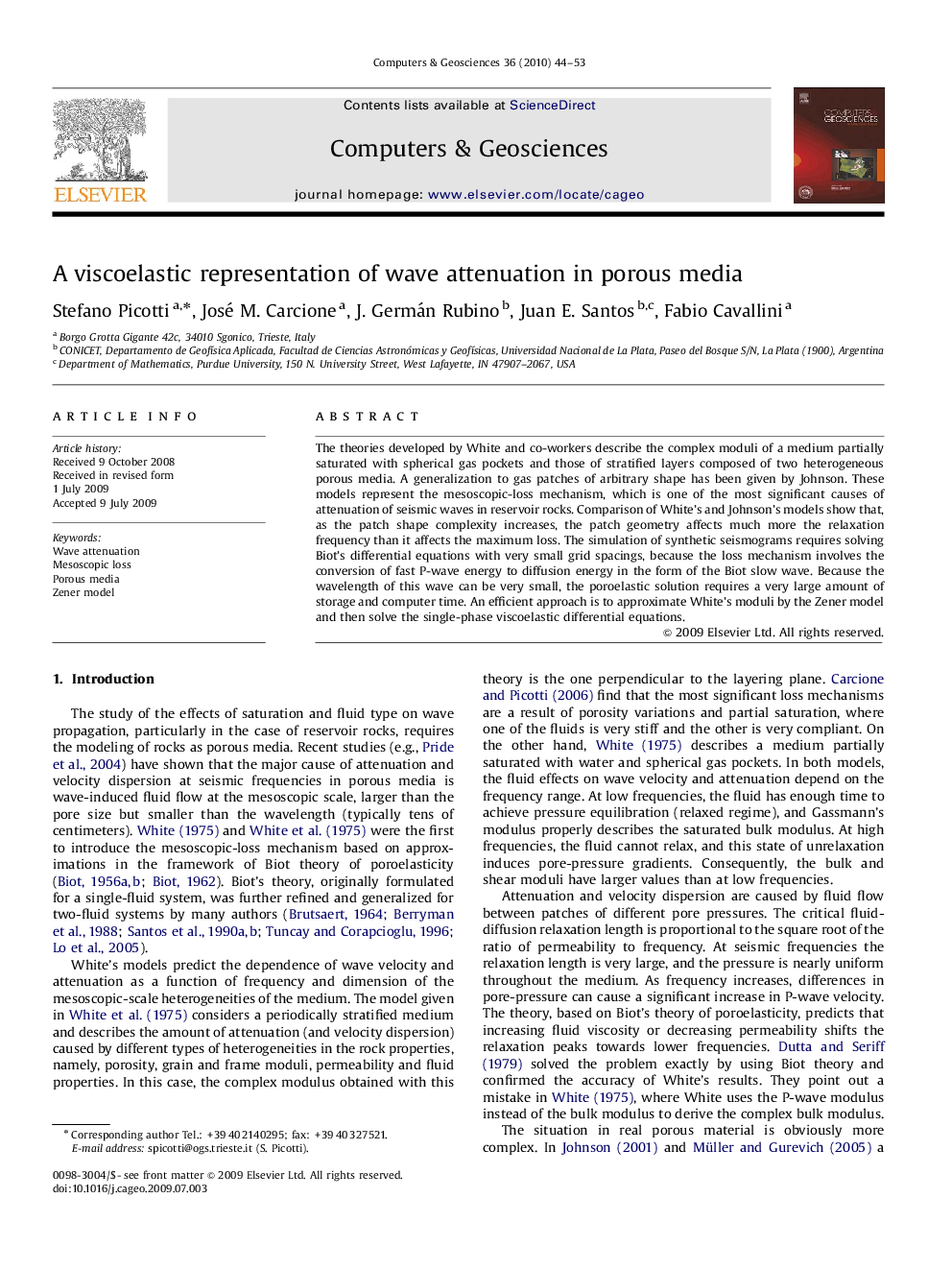| Article ID | Journal | Published Year | Pages | File Type |
|---|---|---|---|---|
| 506969 | Computers & Geosciences | 2010 | 10 Pages |
The theories developed by White and co-workers describe the complex moduli of a medium partially saturated with spherical gas pockets and those of stratified layers composed of two heterogeneous porous media. A generalization to gas patches of arbitrary shape has been given by Johnson. These models represent the mesoscopic-loss mechanism, which is one of the most significant causes of attenuation of seismic waves in reservoir rocks. Comparison of White's and Johnson's models show that, as the patch shape complexity increases, the patch geometry affects much more the relaxation frequency than it affects the maximum loss. The simulation of synthetic seismograms requires solving Biot's differential equations with very small grid spacings, because the loss mechanism involves the conversion of fast P-wave energy to diffusion energy in the form of the Biot slow wave. Because the wavelength of this wave can be very small, the poroelastic solution requires a very large amount of storage and computer time. An efficient approach is to approximate White's moduli by the Zener model and then solve the single-phase viscoelastic differential equations.
